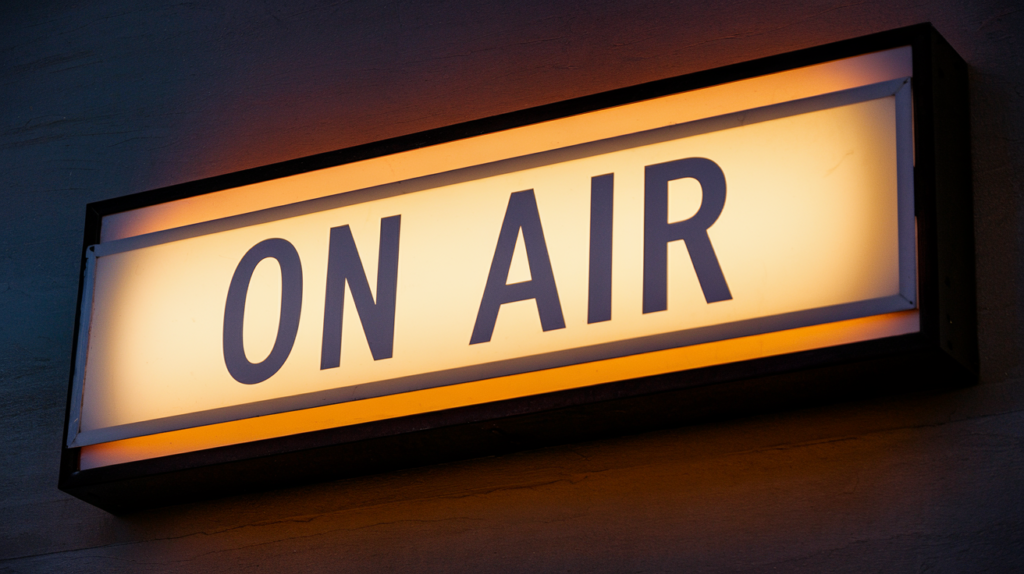Key Takeaways
- Understanding Dialects: Recognizing the significance of Italian dialects enriches voiceover projects, influencing audience perception and emotional connection.
- Standard Italian Characteristics: Standard Italian is marked by clear enunciation, a neutral tone, and widely recognized vocabulary, making it ideal for professional contexts.
- Sicilian Dialect Features: Sicilian dialect showcases unique phonetics and rich cultural influences that enhance authenticity in voiceovers aimed at local audiences.
- Voiceover Techniques: Different delivery styles in both Standard Italian and Sicilian dialect play a crucial role in engaging listeners—adjusting tone and pacing helps convey the intended message effectively.
- Audience Connection: Choosing the right dialect based on your target audience can foster stronger emotional ties, particularly when aligning with regional identities.
- Contextual Relevance: The selection of voice talent should align with project goals—Standard Italian suits broader audiences while Sicilian dialect excels in localized initiatives.
Ever wondered why some voiceovers sound so different even when they’re speaking the same language? When it comes to Standard Italian vs Sicilian dialect voiceover, the differences are more than just accents. They reflect rich cultural histories and unique expressions that can either enhance or confuse your project.
Overview of Italian Dialects
Italian dialects play a crucial role in the landscape of voiceover projects. Each dialect carries unique cultural nuances and historical context, which can shape how your message is perceived by an audience. Understanding these differences enhances your selection of voice talent for various projects.
Importance of Dialects in Voiceover
Dialects add depth and authenticity to any voiceover. They evoke emotions and connect with listeners on a personal level. When using specific dialects, your choice can resonate more effectively with target audiences, especially when they relate to regional identities. A skilled voice artist knows how to navigate these subtleties, ensuring that each project communicates its intended message clearly and engagingly.
Key Characteristics of Standard Italian
Standard Italian serves as the lingua franca across Italy, characterized by its clarity and formal structure. It’s based on the Tuscan dialect but incorporates elements from other regions. This makes it ideal for professional settings where precise communication matters most—such as corporate videos or educational materials.
Standard Italian features:
- Clear Enunciation: Articulation remains sharp, making it easier for audiences unfamiliar with regional accents.
- Neutral Tone: The tone often stays consistent across various contexts, suitable for diverse content types.
- Widely Recognized Vocabulary: Common phrases enhance understanding among broader audiences.
Choosing Standard Italian for your project ensures accessibility while maintaining professionalism—key factors in effective voiceovers that resonate well with all listeners.
Sicilian Dialect Characteristics
Sicilian dialect boasts unique features that set it apart from Standard Italian, both in sound and cultural expression. Understanding these characteristics is essential for voiceover projects targeting Sicilian audiences.
Unique Phonetics and Pronunciation
Sicilian phonetics differ significantly from Standard Italian. For example, the pronunciation of “c” before “e” or “i” often shifts to a “ch” sound, transforming words like “cena” (dinner) into “chena.” Vowels also exhibit variations; the final vowel sounds are often more open. These distinctive sounds contribute to a rich auditory experience, making Sicilian voiceovers vibrant and engaging. Utilizing skilled voice talent familiar with these nuances enhances authenticity in your project.
Cultural Influences on Sicilian Dialect
Cultural influences shape the Sicilian dialect profoundly. It reflects centuries of history, blending elements from Arabic, Spanish, Greek, and other languages due to Sicily’s strategic location. This diverse heritage introduces unique expressions and phrases that resonate deeply with local listeners. Incorporating culturally relevant language in your voiceover can evoke stronger emotional connections with the audience. A knowledgeable voice artist familiar with these cultural intricacies can bring depth to your content while ensuring clear communication tailored to Sicilian sensibilities.
Embracing these characteristics ensures effective engagement in any project aimed at Sicilian speakers, enhancing listener connection through authentic representation of their linguistic heritage.
Standard Italian Voiceover Techniques
Standard Italian voiceovers stand out for their clarity and professionalism. They serve as a common language across Italy, making them ideal for reaching diverse audiences. The techniques used in these voiceovers significantly enhance the delivery of messages.
Nuances and Delivery Styles
Nuances in Standard Italian voiceovers revolve around intonation, pacing, and emotional expression. Skilled voice actors adjust their tone to match the content’s mood—whether it’s persuasive, informative, or narrative. Emphasizing key words can draw attention to important points, engaging listeners effectively.
Delivery styles vary based on context; for instance, corporate training videos often require a more formal approach to convey authority. In contrast, promotional materials may benefit from a lively and enthusiastic tone that captures excitement. Understanding your audience helps you select the right style for your project.
Common Uses in Media
Standard Italian is frequently utilized in various media formats such as commercials, documentaries, e-learning modules, and audiobooks. Its neutral tone ensures that messages resonate with broad audiences without regional bias.
In advertising campaigns targeting national markets, using Standard Italian enhances brand credibility and accessibility. Educational content benefits from its clarity too—students grasp concepts better when delivered in an easily understandable manner.
Choosing the right voice talent specializing in Standard Italian can make all the difference in achieving effective communication in your projects.
Sicilian Dialect Voiceover Techniques
Sicilian dialect voiceovers require specific techniques to capture the essence of the language and culture. Understanding these techniques ensures your project resonates with Sicilian audiences.
Adaptation for Authenticity
Authenticity is crucial in Sicilian dialect voiceovers. You want your message to feel genuine, so adapting content to reflect local expressions and cultural nuances matters. Skilled voice actors familiar with Sicilian dialects can seamlessly incorporate phrases that convey the right emotional tone. They’ll adjust their delivery style, focusing on vowel sounds and rhythmic patterns unique to Sicily. This adaptation not only enhances listener engagement but also builds trust, making your content more relatable.
Challenges in Delivery
Delivering a compelling Sicilian dialect voiceover presents challenges. The distinct phonetics of Sicilian may differ significantly from Standard Italian, leading to potential misinterpretations if delivered incorrectly. Voice artists must navigate various pronunciation shifts while maintaining clarity. Moreover, capturing the lively intonations characteristic of the dialect requires practice and expertise. Experienced voice talents know how to balance expressiveness with comprehensibility, ensuring that even nuanced messages resonate clearly with listeners.
Utilizing professionals who specialize in these techniques elevates your project’s quality, creating a more immersive experience for your audience.
Comparative Analysis: Standard Italian vs Sicilian Dialect Voiceover
Standard Italian and Sicilian dialect voiceovers showcase distinct characteristics that influence audience engagement. Understanding these differences can enhance project effectiveness.
Audience Perception and Reception
Audience perception varies significantly between Standard Italian and Sicilian dialect voiceovers. Standard Italian, recognized for its clarity and neutrality, appeals to a broad audience across different contexts. Listeners often associate it with professionalism, making it ideal for corporate presentations or educational content.
Sicilian dialect voiceovers resonate differently; they evoke a sense of local identity and cultural richness. When you choose a Sicilian voice artist familiar with the nuances of the dialect, you’re not just adding authenticity—you’re fostering an emotional connection with the audience. This connection can lead to greater trust in your brand or message, particularly among those who identify strongly with their regional heritage.
Contextual Usage in Different Platforms
The context in which you use these voiceovers also matters greatly. Standard Italian excels in diverse media formats such as commercials, documentaries, e-learning modules, and audiobooks due to its universal appeal. It’s adaptable enough to suit various tones and styles while ensuring clarity across platforms.
On the other hand, Sicilian dialect shines in localized projects like regional advertisements or cultural storytelling initiatives where conveying deep-rooted traditions is essential. Utilizing a skilled voice actor who understands local expressions enhances engagement on platforms such as social media or community events.
Whether opting for Standard Italian’s widespread recognition or the rich expressiveness of Sicilian dialects, selecting appropriate voice over talent plays a crucial role in capturing your intended message effectively while resonating deeply with your target audience.
Conclusion
Understanding the differences between Standard Italian and Sicilian dialect voiceovers is crucial for anyone looking to connect with their audience. Each dialect brings its own set of cultural nuances and emotional depth that can either enhance or detract from your project’s impact.
When choosing a voiceover, consider what resonates best with your target audience. Standard Italian offers clarity and professionalism while the Sicilian dialect adds authenticity and local flavor. Selecting the right talent who can navigate these distinctions will ensure your message is delivered effectively and meaningfully. Embrace these rich linguistic variations to create a more engaging experience for your listeners.
Frequently Asked Questions
What is the main difference between Standard Italian and Sicilian dialect in voiceovers?
The main difference lies in cultural nuances and expressions. Standard Italian is clear and neutral, making it suitable for various audiences, while Sicilian dialect features unique phonetics influenced by its rich heritage. This affects how projects resonate with listeners.
Why are dialects important in voiceover projects?
Dialects add depth and authenticity to voiceover projects. They evoke emotions and help connect with audiences on a personal level, enhancing overall effectiveness by ensuring the message resonates culturally.
How does Standard Italian benefit corporate or educational content?
Standard Italian’s clarity and widely recognized vocabulary make it ideal for corporate and educational settings. Its neutral tone can effectively communicate messages across diverse media formats to a broad audience.
What challenges exist when using Sicilian dialect in voiceovers?
One challenge is delivering authentic performances that resonate with local listeners. Voice actors must master unique phonetics and cultural expressions to ensure they convey the intended message effectively.
How do audience perceptions differ between Standard Italian and Sicilian dialect?
Standard Italian is generally perceived as professional, appealing to a wide audience. In contrast, Sicilian dialect evokes local identity and richness, making it more impactful for targeted projects within Sicily or among Sicilian communities.







